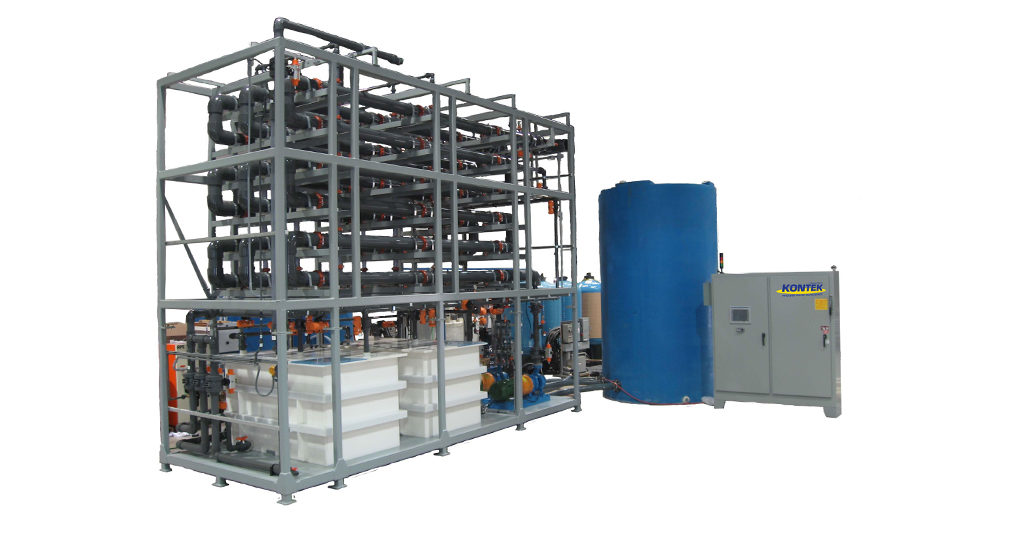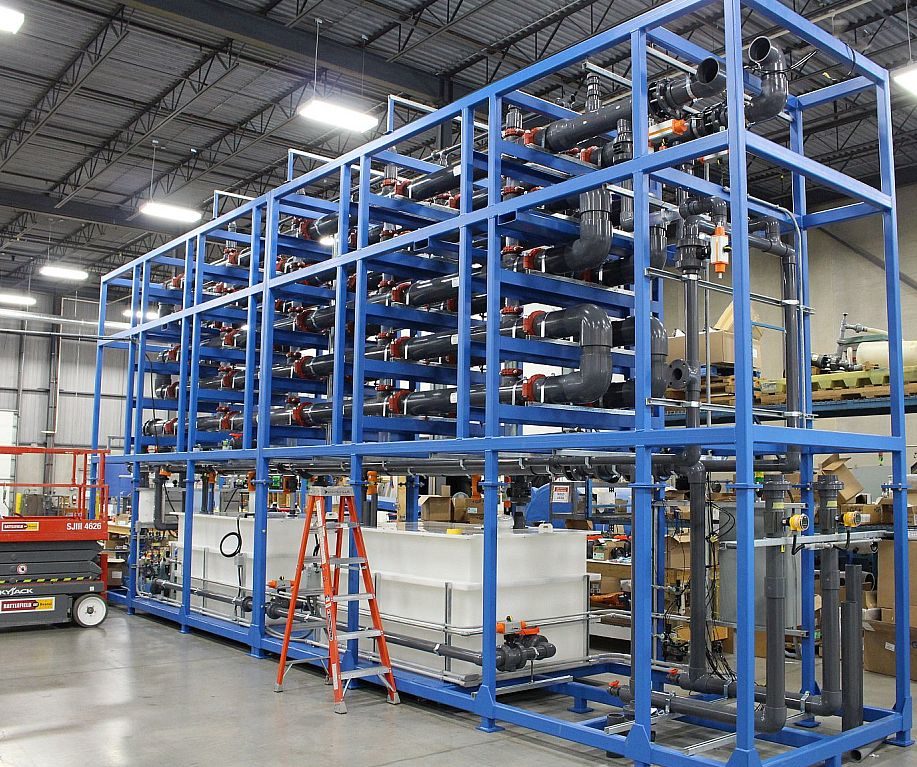
BENEFITS & FEATURES
- Remove suspended solids from treated wastewater down to 0.1 microns
- With the proper chemical treatment of the wastewater, microfiltration will reduce sludge volume delivered to the filter press
- Fully automated, turnkey designs available
- Standardized designs, with flexibility for customization, in 5 – 20 gpm
- Dual or triple train design provides 100% uptime while one train is undergoing membrane cleaning
MEMKON MEMBRANES

Membranes employ a moulded design, unlike others which are rolled from a flat sheet into a tube which then has a lengthwise seam, which creates a weak spot.
•Membranes are moulded from high purity sintered polyethylene, and have the capability of retaining all initial properties even after immersion into bleach for a one year period. Competitor’s membranes typically become brittle after about 30 days of immersion in bleach. Bleach is a very commonly used cleaning agent, so corrosion resistance is very important.
•Membranes have tube walls that are 25-30% thicker and thus stronger and more robust than the competition.
MEMKON MICROFILTRATION SUSPENDED SOLIDS REMOVAL
Clarification and Recovery of Industrial WastewaterConsistently meet compliant water discharge levels with durable membrane filtration systems
MemKon microfiltration systems are designed for the clarification of treated wastewater and process water. MemKon microfiltration eliminate the need for clarifiers, polymers and multimedia filters to remove total suspended solids (TSS) from waste streams, to meet critical discharge limits (i.e. cadmium, lead, mercury). The filtered permeate can be further processed by a RoKon Reverse Osmosis system for water recovery and reuse.
MEMKON MEMBRANE FILTRATION
Membranes employ a moulded design, unlike others which are rolled from a flat sheet into a tube which then has a lengthwise seam which creates a weak spot.
•Membranes are moulded from high purity sintered polyethylene, and have the capability of retaining all initial properties even after immersion into bleach for a one year period. Competitor’s membranes typically become brittle after about 30 days of immersion in bleach. Bleach is a very commonly used cleaning agent, so corrosion resistance is very important.
•Membranes have tube walls that are 25-30% thicker and thus stronger and more robust than the competition.
- Very strong membranes: They can handle up to 10% of hydrochloric acid.
- All inert construction: PVC housing PVDF operating pressure 60 PSIG
- Operating temperature: 110 F
Adjustable back-pressure valve allows for control of permeate flow rate
• Automatic back pulse system clears the membrane surface to maintain optimal permeate rates
• Sample valve ports on each membrane housing permeate maximizes diagnostic capabilities
• Supplied with chemical cleaning solution recirculation pump and tanks
• Optional, completely automated cleaning cycle available, with chemical make-up systems
